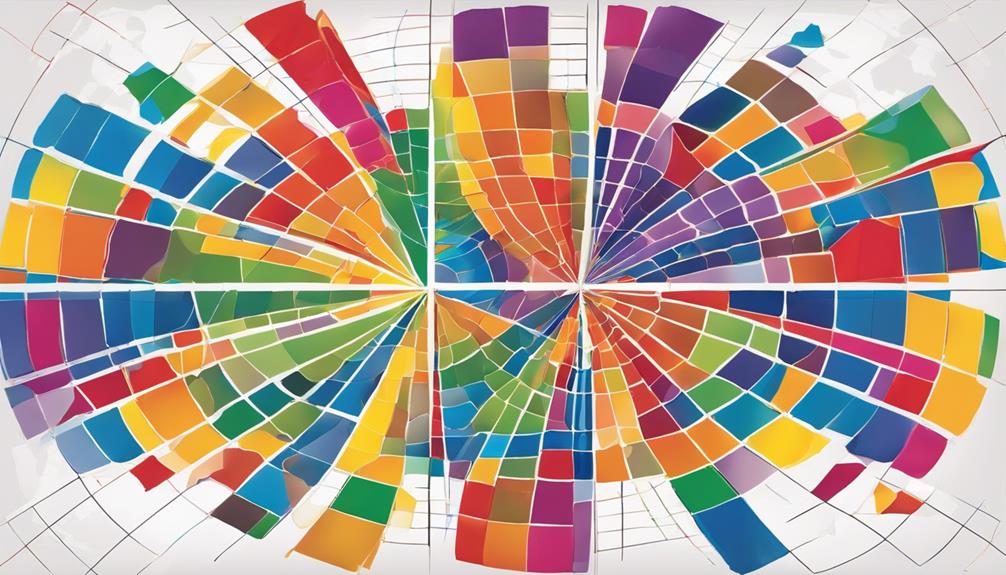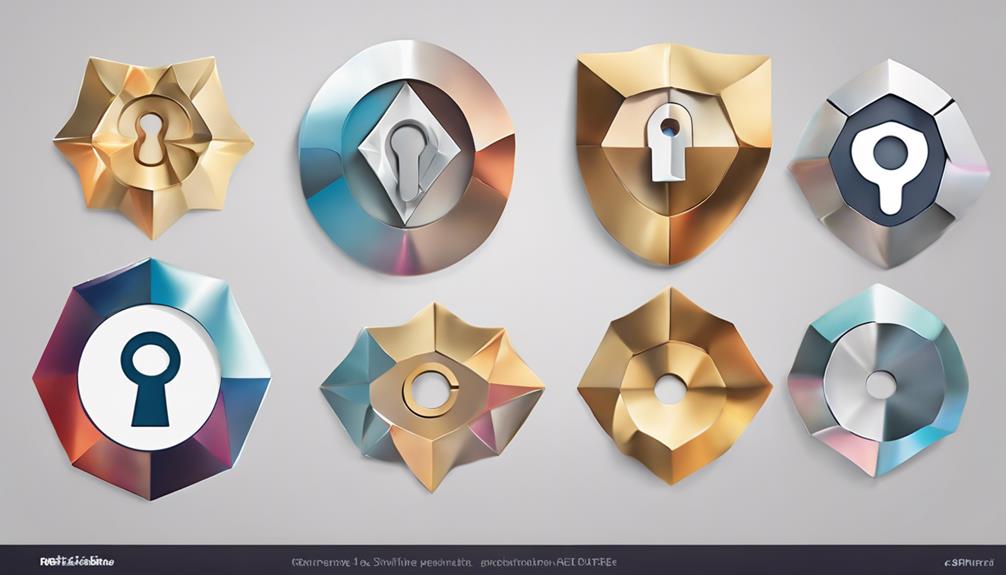Have you ever thought about how your DISC assessment results can really influence your personal and professional life?
Understanding the intricacies of your scores can unveil a wealth of valuable insights into your behaviors and interactions.
By diving into the depths of your DISC assessment, you'll uncover a roadmap to enhancing relationships, communication, and overall effectiveness in various contexts.
So, are you ready to unravel the secrets hidden within your DISC results and unlock your full potential?
Key Takeaways
- Identify dominant traits through graph analysis for effective self-awareness.
- Leverage primary strengths from the highest DISC dimension for effective communication.
- Use the Intensity Index to understand varying degrees of personality traits.
- Analyze profile patterns to customize communication and adapt to different environments.
Understanding the DISC Quadrants
Understanding the DISC Quadrants allows individuals to comprehend how their personality traits manifest in various behavioral tendencies. The DISC model categorizes personality into four primary quadrants: Dominance, Influence, Steadiness, and Conscientiousness. These quadrants offer insights into different aspects of an individual's behavioral style at work and in personal interactions. By interpreting the placement of scores in the DISC Quadrants, one can identify their dominant traits and understand how these traits influence their actions and decisions.
Analyzing the distribution of scores across the quadrants reveals a person's natural inclinations and preferences in communication, teamwork, and problem-solving. For example, high scores in Dominance may indicate assertiveness and a focus on results, while a dominant Influence score could suggest a sociable and persuasive nature. Understanding these behavioral tendencies can help individuals leverage their strengths in various situations and adapt their communication style to interact more effectively with others based on their DISC profile.
Analyzing Your DISC Graph

Analyzing the DISC graph provides a visual representation of an individual's scores for Dominance, Influence, Steadiness, and Conscientiousness traits, offering valuable insights into their behavioral preferences and tendencies. When interpreting your DISC assessment report through the graph, consider the following:
- Each bar on the graph corresponds to a specific trait, indicating the level of preference.
- Scores above 50 indicate a strong inclination towards a trait, while scores below 50 suggest a lesser inclination.
- The energy line at 50 serves as a pivotal reference point for understanding trait intensity.
- Analyzing the graph helps in identifying dominant traits within an individual's behavioral style.
- The line graphs in the DISC graph provide a clear visualization of your natural profile and highlight areas where specific traits are more pronounced.
Interpreting Your Highest DISC Dimension
Have you ever considered the impact of your highest DISC dimension on your communication style and decision-making processes?
Your highest DISC dimension, as revealed in your test results, plays a crucial role in shaping your behavioral style. It signifies your primary strengths and areas where you excel, shedding light on your dominant personalities and tendencies. Understanding this dimension is key to comprehending how you interact with others and tackle tasks.
Whether your dimension falls on the high or low end, it significantly influences your communication style and decision-making processes. By recognizing your highest dimension, you can leverage your strengths effectively and be mindful of potential weaknesses associated with it. This insight enables you to adapt your approach to communication and decision-making, maximizing your effectiveness in various situations.
Embracing and harnessing the power of your highest DISC dimension can lead to improved outcomes and enhanced relationships both personally and professionally.
Exploring Your Intensity Index

Our exploration of the Intensity Index in DISC assessments illuminates the varying degrees of dominance, influence, steadiness, and conscientiousness manifested in individual behaviors. Understanding the Intensity Index provides insights into the intensity of each personality trait, aiding in identifying the most prominent traits influencing behavior.
Here are some key insights to consider:
- High scores on the Intensity Index indicate strong behavioral tendencies towards a specific personality trait.
- Low scores suggest a lesser emphasis on a particular trait in an individual's behavior.
- The Intensity Index offers a numerical value that reflects the intensity of each trait, aiding in a more precise understanding of an individual's behavioral tendencies.
- Analyzing the Intensity Index helps in recognizing which traits have the most significant impact on an individual's overall behavior.
- By focusing on the Intensity Index, individuals can gain a deeper understanding of their dominant characteristics and how they influence their actions and interactions.
Reviewing Your Profile Pattern
In assessing your DISC profile pattern, the distribution of scores in Dominance, Influence, Steadiness, and Conscientiousness traits reveals valuable insights into your behavioral tendencies and preferences. By understanding these trait scores, you can recognize your primary and secondary traits, which influence how you naturally behave in various situations.
Patterns in your trait scores offer a glimpse into your behavioral tendencies, aiding in communication customization and environment adaptation. For instance, if you score high in Dominance, you might prefer taking charge in leadership roles, while a high Influence score could indicate a propensity for social interactions.
Steadiness scores may suggest a preference for stability and harmony, whereas Conscientiousness scores could reflect an inclination towards detail-oriented tasks. By delving into these DISC profile results, you gain a deeper understanding of yourself, enabling you to adapt your communication style and thrive in different environments effectively.
Frequently Asked Questions
What Are the 4 DISC Personality Types?
We identify the 4 DISC personality types as Dominance (D), Influence (I), Steadiness (S), and Conscientiousness (C). Each type signifies distinct traits such as assertiveness, social skills, patience, and reliability, respectively.
How Do You Interpret DISC Results?
We interpret DISC results by analyzing scores on Dominance, Influence, Steadiness, and Conscientiousness traits. High scores indicate strong behavioral tendencies, while low scores suggest lesser emphasis. Understanding these combinations helps identify one's natural behavioral style for effective communication and growth.
How Do You Read a DISC Assessment Chart?
When we read a DISC assessment chart, we focus on the dot symbolizing average scores for personality traits. Profile graphs illustrate trait scores in adapting, natural, and overall profiles, aiding in understanding strengths and behavioral styles.
How to Score the DISC Personality Test?
To score the DISC personality test, evaluate scores ranging from 0-100 for each trait. High scores above 50 indicate strong tendencies, while low scores below 50 suggest minimal expression. Balanced scores around 50 show a mix of behaviors.
Can You Trust the Results of Your DISC Assessment?
The validity of DISC assessment has been a topic of debate among professionals. While some believe in its accuracy, others question its reliability. Ultimately, the trustworthiness of the results depends on the quality of the assessment and the expertise of the administrator.
Conclusion
In conclusion, understanding our DISC assessment results is key to personal growth and effective communication.
By delving into our behavioral tendencies, analyzing our graph, and recognizing our strengths and weaknesses, we can adapt to different situations and work on enhancing our interactions with others.
Remember, knowledge is power, and knowing our DISC profile inside out can truly be the key to unlocking our full potential in various aspects of our lives.









